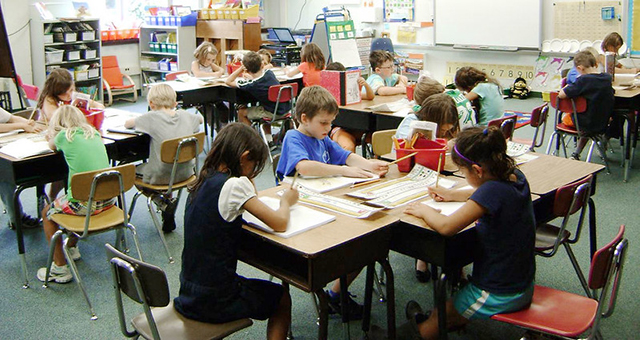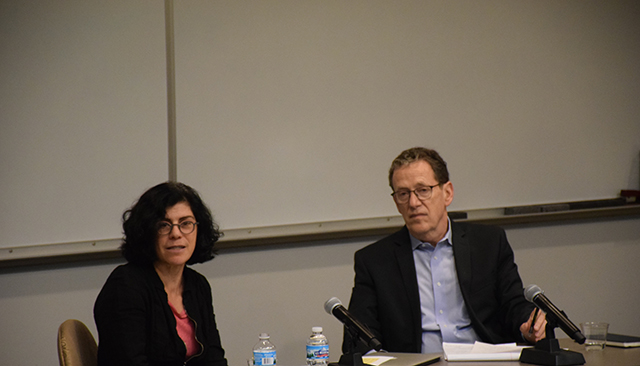Applying Research in Classrooms
A researcher and a practitioner explore how school districts use evidence
Get all our news
Educators will go deep into highly technical [data and information] when it is responding to something in their heart, and mind, and in their day-to-day work.”
Paul Goren

Nottingham Elementary School students in class. Arlington Public Schools, Flickr.
For the average educator, it may seem like there are not enough hours in the day to fully work through their lesson plan, much less discover and implement the latest evidence-based research.
In a conversation hosted by IPR’s Statistics and Evidence-Based Policy and Practice (STEPP) Center, IPR associate Cynthia Coburn and Paul Goren, both of the School of Education and Social Policy (SESP), discussed the effort needed on all sides to help research work its way into the classroom.
“I have been in districts where they… draw on research, and they look at data and do very thoughtful things with it,” Coburn said. “But you have to have a really big commitment to do that.”
Goren, who was superintendent for Evanston/Skokie’s School District 65 before joining SESP, described how he drew on research in his own work as an administrator.
Goren said he would frequently draw directly on the sort of “work that you would have in a class at Northwestern.”For instance, Goren based his district’s strategic plan on seminal research conducted at the University of Chicago on Chicago Public Schools by Anthony Bryk and colleagues on how to organize schools for success.
Their work, based on over 20 years of research, points to the importance of ambitious instruction and teacher collaboration to improve outcomes for students, Goren said, noting that it is this sort of evidence that practitioners find useful.
Coburn’s research shows how educators learn about and access academic research, and she points to social networks and professional associations as the two main conduits. So she suggests that researchers could join professional organizations that connect them directly to educators to increase their access to research.

But, “Findings alone are not enough, it’s findings with something around them that are important,” Coburn said. “That ‘something’ around them can be a conversation, or training that helps people in school districts make meaning of them, understand them deeply, and informs their strategic thinking.”
Goren says that if research focused on the challenges and problems educators face in the classroom, then more teachers and administrators would readily access what would be considered usable knowledge.
He added, “Educators will go deep into highly technical [data and information] when it is responding to something in their heart, and mind, and in their day-to-day work. I never shied away from putting technical work in front of my senior team, our principals, or our teacher leaders.”
Both Goren and Coburn agreed that significant obstacles exist to getting that work in front of educators. For researchers, they stressed the importance of engaging practitioners in the framing and co-construction of their research questions. For educators, who continually face shrinking budgets, political considerations, and the sheer lack of time, they expressed optimism that even a small amount of rigorous research in the hands of capable educators can improve student outcomes.
“There are so many micro-decisions that you make every day,” Coburn said. “If there’s something helping people puzzle through and think about it in even a little bit of a smarter way… then that’s useful in helping someone make a better decision.”
Published: December 23, 2019.


